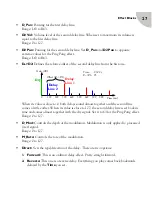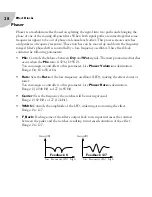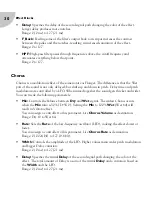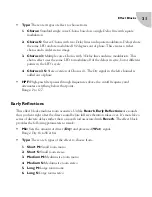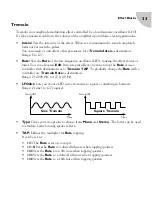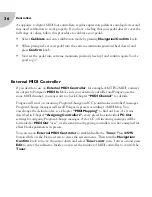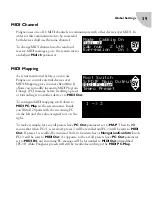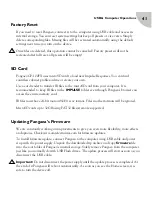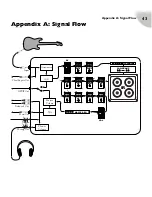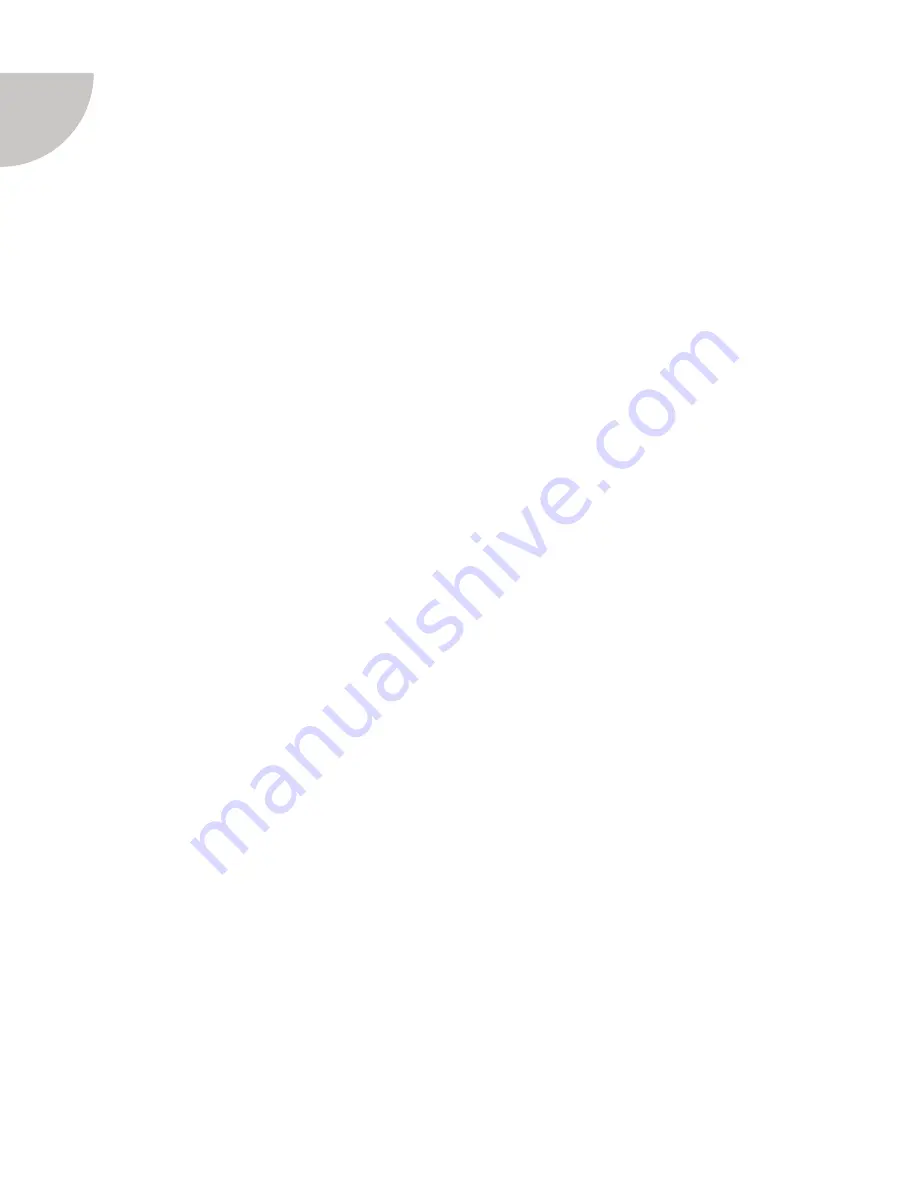
Effect Blocks
32
Reverb
Reverb simulates placing your amp in a big, reverberant space with a lot of echo, like a
church, a huge concert hall or a parking garage. It wets your sound, smooths it out, and may
help with the sustain.
Pangaea has a powerful reverb unit capable of emulating different types of reverb. You can
tweak the following parameters:
•
Mix:
Sets the amount of direct (
Dry
) and processed (
Wet
) signal.
You can assign a controller to this parameter. Use
Reverb Volume
as destination.
Range: Dry 63 to Wet 64.
•
Time:
Controls the decay
Time
. In other words, it lets you choose how long the reverb
will sound. No matter how large or tiny the room is, you can set it to anything from very
short to infinity.
You can assign a controller to this parameter. Use
Reverb Time
as destination.
Range: 0 to 127.
•
Size:
Sets the
Size
of the room. The greater the room, the longer the reverb time. With
Size
set to 0 and
Time
between 30 and 45 you can get a tone similar to a spring reverb.
Range: 0 to 127.
•
Damp:
Damping shortens the reverb decay for the higher frequencies simulating warmer
sounding rooms.
Range: 0 to 127.
•
LPF:
Low-pass filter passes through frequencies below the cutoff frequency and
attenuates everything above that point.
Range: 0 to 127.
•
HPF:
High-pass filter passes through frequencies above the cutoff frequency and
attenuates everything below that point.
Range: 0 to 127.
•
Detune:
Sets the amount of pitch modulation for the processed signal. This one can
add more life and motion to your sound or make really weird and totally ruin it. Handle
with care!
Range: 0 to 127.










